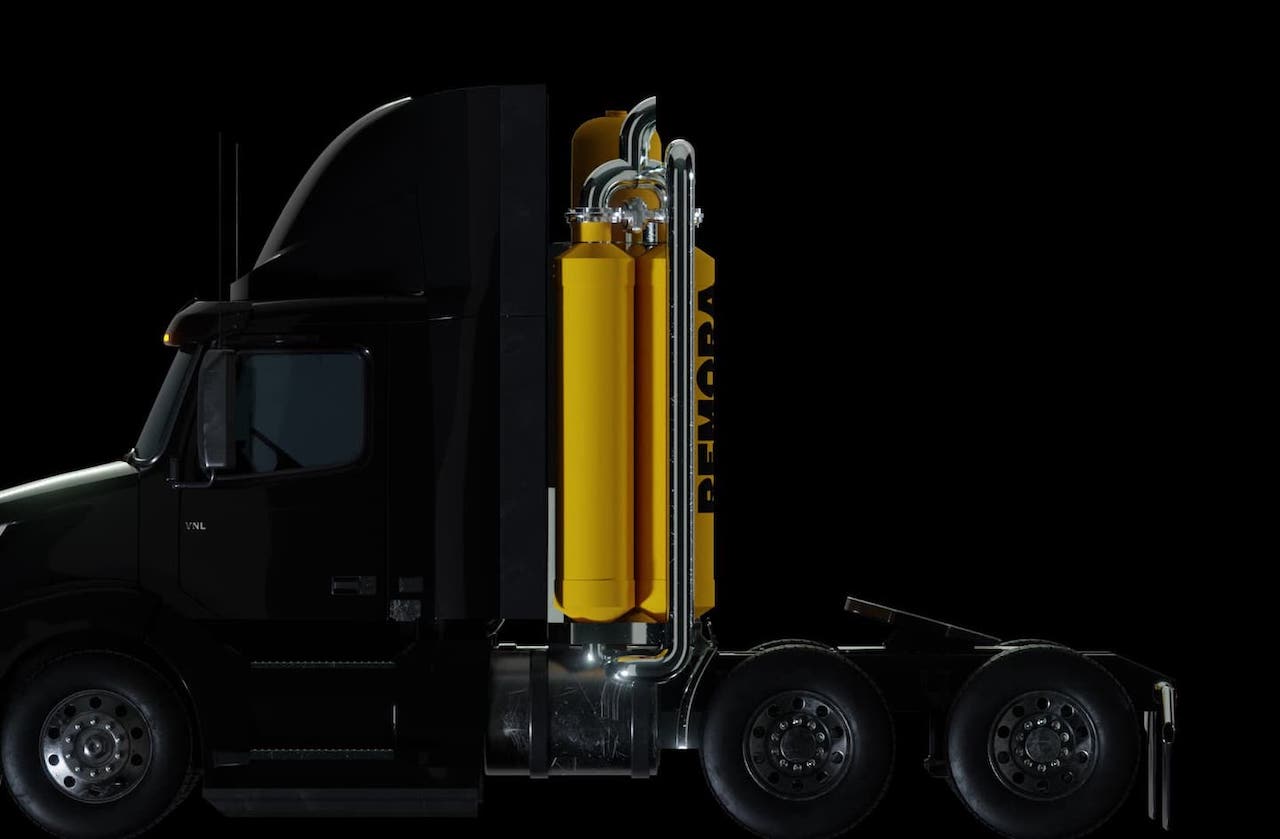The transport sector is currently responsible for about a quarter of the world’s carbon emissions. By 2035, it is projected to be the largest source of greenhouse gases. It’s no wonder that decarbonising the transport sector is a top environmental priority.
However, the transition to cleaner transportation poses significant challenges for regulators, consumers and industries alike. While battery electric vehicles have proven effective for light-duty, short-haul trips in urban areas, they fall short in more demanding applications.
Now, an innovative solution — mobile carbon capture (MCC) — is gaining steam. Researchers say it could revolutionise emissions reduction for trucks, trains, planes and boats by connecting vehicles to CO2 distribution infrastructure and capturing carbon at the source.
What is mobile carbon capture?
Simply put, MCC refers to the process of capturing CO2 at the point of emission — namely, from the vehicle while it is in motion — before it is released into the atmosphere. The technologies for capturing carbon can be integrated into various mobile platforms. Meanwhile, the captured CO2 can be stored temporarily and then either utilised in industrial processes or permanently stored in underground geological formations through carbon sequestration.
Prototype captures 40 percent of the carbon of a semi-truck
In November 2022, researchers published the results of a groundbreaking pilot-scale 165 kW MCC facility integrated into the back of a Class VIII semi-truck. The vehicle was able to run a thermal-swing absorption process, commonly used for large stationary carbon capture systems, in the space between the truck and the trailer. The entire process for CO2 absorption — solvent regeneration, CO2 compression, and storage — took place on the road.
The results were promising. At a 50 percent engine load, the MCC system achieved a maximum 42 percent capture rate, surpassing the potential CO2 reductions achievable with organic Rankine cycle (ORC) technology. Furthermore, the system relied solely on waste heat from the exhaust to drive the separation process.
MCC technologies are improving fast
More recently, researchers at the King Abdullah University of Science and Technology in Saudi Arabia designed a more efficient MCC system. To address energy, space, and process constraints, they utilised a family of porous materials with cage-like structures called metal-organic frameworks (MOFs). MOFs are ideal for capturing CO2 as they store it without undergoing chemical reactions, enabling easy separation with low energy consumption.
The team designed two specialised MOFs. One captured CO2 from gas mixtures, even in humid conditions, and another stored the captured CO2 efficiently. Again, exhaust heat was used to regenerate the MOFs and separate CO2. They calculated the optimal pressure and power requirements based on typical daily driving conditions of semi-trucks.
Remarkably, the system captured 50 percent of emitted CO2 at 96 percent purity, requiring only 7.6 percent additional engine power to operate and fitting in a compact volume of less than 1.5 cubic metres.
Mobile carbon capture: The road ahead
As technology continues to advance and research progresses, mobile carbon capture has the potential to play a crucial role in achieving deep decarbonisation in the transport sector.
Further development is necessary to improve efficiency, scalability, and cost-effectiveness. Balancing energy and power requirements with effective CO2 capture is essential, as is the development of infrastructure for CO2 distribution and storage. Other critical steps include overcoming weight and space constraints in vehicle integration, along with ensuring competitive costs and favourable regulations. Finally, determining the most productive carbon capture and storage methods are vital for successful implementation as well as to gain acceptance among the public, industry, and regulators.









